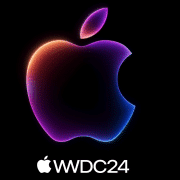Brand Partnership Manager
The adage that suggests that «necessity is the mother of invention» has been around for eons and is perhaps more relevant today. The need for reinvention and innovation continues to grow. Today’s technology development has been called the Fourth Industrial Revolution. It is seeding the evolution of the future through the same explosions of creativity that generated the first three.
Necessity + Creativity = Innovation
History reveals that, in every case, new inventions are devised to meet an unmet need. Humans have always identified deficits in their situation, then created a way to fill them, from developing primitive tools to the control of fire, the construction of shelters, and beyond.

The First Industrial Revolution: Mechanization
During the late 18th century’s First Industrial Revolution, machines began replacing human labor. Mechanization «disrupted» virtually every aspect of the social order. It raised America’s Gross Domestic Product (GDP) from 180 million in 1790 to over 11 billion in 1860. This drove its economy past Great Britain’s, and it also laid the foundation for the second Industrial Revolution – the mastery of mass production.
The Second Industrial Revolution: Mass Production
Late 19th-century industries embraced cotton gin inventor Eli Whitney’s innovative concept of interchangeable parts, which resulted in the standardization of manufacturing processes. Henry Ford perfected the process in his assembly line automobile production plants.
The resulting web of interconnected industries powered the growth of the GDP per person (per capita). It rose from 2,445 dollars annually in 1870 to 15,030 in 1970. Early and mid-20th-century industries were ripe to embrace the emergence of digital technologies to launch the late 20th century’s third Industrial Revolution – the rise of automation.
The Third Industrial Revolution: Automation
Creativity has exploded beyond all traditional horizons since the advent of the first PC. Computing technology has subsumed whole industries, such as telecommunications, manufacturing, and international logistics. Most of the world’s current economies would collapse without the digital tools they deploy across their industrial bases.
Automation of entire industrial sectors has improved safety, reduced costs, and expanded the American GDP from 543.3 billion in 1960 to 18,624 billion in 2016.

The Fourth Industrial Revolution: Emerging and Disruptive Technologies
While it continues to expand, the Third Industrial Revolution has already set the stage for the fourth Industrial Revolution. Emerging and disruptive technologies are presently unfolding and offer almost unimaginable opportunities for growth and expansion.
Why Humans Rise to Meet the Need for Innovation
Humans have modified their thinking throughout these evolutions and adapted to new realities by using their creative imagination. They either invent whole new concepts or innovate improvements to their existing tools. In both cases, when presented with a seemingly impossible barrier, the human brain has absorbed the challenge and created a response that eliminates the barrier and resolves the problem.
Scientists continue to explore the human brain to identify how that creativity works and how to harness it more effectively.
The Science of Creativity
Pondering creativity often means asking why some people seem more creative than others. What led Eli Whitney, instead of his competitors, to develop a more productive cotton gin? What triggered Steve Jobs but not IBM to combine a phone, stereo, and computer into a single device? Researchers have revealed interesting facts about human creativity that offer insights into why human creativity continues to evolve.

The drive for exploration, in its many forms may be the single most important personal factor predicting creative achievement.
Scott Barry Kaufman and Carolyn Gregoire
- Being creative often springs from exposure to new things. The neurotransmitter dopamine facilitates the brain’s capacity to «engage flexibly with new things,» according to Scott Barry Kaufman and Carolyn Gregoire in the book Wired to Create: Unraveling the Mysteries of the Creative Mind.
- Intuition also plays a role in creativity. People who just «had a hunch» often follow that intuitive thought into a new frontier. Steve Jobs believed that «intuition is more powerful than intellect.»
- «Spacing Out,» daydreaming, or reminiscing about good times also facilitates creativity. It releases the brain from its formalized thought structures and allows it to meander into a novel, imaginative vistas.
Healthcare, Marketing, and Education
The human capacity to creatively solve existing problems and new concerns will not abate any time soon. Many of today’s leading technologies are already focused on developing new digital avenues to discover as-yet unknown advantages.
- Healthcare field. The emergence of Electronic Medical Records (EMRs) in 2009 has ignited a creative frenzy that promises an entire healthcare industrial revolution in and of itself. Complex analysis of EMRs identifies mix-ups and miscommunications before patients are harmed. Unobtrusive body sensors inform medical teams of patient concerns, often before the patient is aware that there’s a problem.
- Marketing sector. The «rapid escalation of complexity» demands a comparable escalation of creativity to find answers to immensely complex quandaries.
- Education. Researchers are «increasing educational research to support the importance of creativity in the fields of thinking and learning,» based on the notion that creativity is «an important aspect of innovation and change.»
Looking For the New Revolution – Emerging and Disruptive Technologies
Innovative technology is solving problems in each of these three sectors. However, in most of these cases, those resolutions reveal more complex issues that need solving. That reality suggests that creativity will continue to be the bedrock upon which tomorrow’s technology industries will be built. As Steve Jobs put it, «The best way to create value in the 21st century is to connect creativity with technology.»

Tangelo holds innovation and creativity as core company values. As a multi-faceted, diverse company, we exemplify how an organization of diverse minds with various backgrounds underlies true innovation and value.
Our diversity has opened up possibilities that don’t exist inside a homogeneous group. As CNET reported, «Study after study has shown that more diverse teams are more creative and innovative. Companies with diverse leadership are more profitable».
We enjoy working with partners who share our commitment. Thus, we are ready to evolve digitally in a highly creative and innovative manner that drives financial performance and measurable market value.
Original post from: Tangelo.tech














